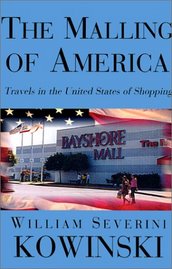In a real sense, when coming to Native lands, we non-Natives are all newcomers. Yet in another sense, even if we are not Native Americans, some of us are native-born Americans, and we, too, belong to this land.
My native grounds are in western Pennsylvania. I was born there, I grew up there, and after some years in various other places, I was living there again before I came to the North Coast. There are a few thousand American Indians in the Pittsburgh area, almost none of them from tribes indigenous to Pennsylvania. There is no reservations or Native land base in the entire state. The last recognized Native land disappeared under the waters of Kinzua Dam, which is the specific subject of Buffy Sainte Marie's famous and glorious protest song, "Now That the Buffalo's Gone."
But a long time ago there were many Native cultures there. The archeological site that documents the oldest human habitation in the U.S., beginning some 16 to 18 thousand years ago, is in western Pennsylvania, at a place called Meadowcroft, which appeared to have been a resting place, possibly after the hunt, for countless generations.
Much of the 18th century history involving Indians and the British, French and then Americans, occurred in Pennsylvania. The first tribe to negotiate a treaty with the new U.S. government was the Lenni Lenape (Delaware) in Pennsylvania; in 1778 in Pittsburgh, they signed an agreement that would have created a fourteenth state, to be populated and governed by the Indian nations. But the Continental Congress failed to ratify the treaty.
Growing up, there were whiffs of all this for a boy living in an in-between place: on the edge of a small town where the young George Washington had changed his horses, but with woods and fields that hadn't yet been turned into suburbs and shopping centers. Although that landscape was still scarred by old mines and had long ago been logged, it had patches of wildness and wildlife.
I remember when I was 10 or so, walking an unusual distance (though in a year or two it would be at the end of my first paper route) with some older boys from the neighborhood, into a patch of woods near Mt. Odin Park ( a popular picnic area), up Toll Gate Hill. We searched for and believed we found Indian arrowheads. One of the older boys pointed to a rusting frame of metal, and claimed it was the remnant of a Conestoga wagon. Though it all appealed to my boyish imagination, neither the arrowheads nor wagon (though in fact it was likely a decayed Ford) was implausible. We were in fact walking a much traveled area. Toll Gate Hill had been a real toll gate along the main road from Pittsburgh east to Fort Ligonier in George Washington's time. Nearby Route 30 traced that wagon and horseback route, which in turn traced a primary Native trail. Many years later, I saw a map of the many other trails that had crisscrossed this area. It wasn't all romantic illusion: there were spirits in those woods.
That particular trail also led to Bushy Run, some six miles west, where an improbable battle in 1764 ended the ongoing siege of Fort Pitt and the last organized threat to non-Native expansion. This was "the west" then, and non-Native hegemony had not been a sure thing.
Senecas and Delawares had surrounded Fort Pitt, and told the English there that they had convinced the Six Nations Confederacy not to attack the fort so the besieged families inside could leave. Instead the English made a gift to the Indians of blankets deliberately infected with smallpox. This was not a story we were told in school.
Moving Chaos
-
White House East Wing, Before and Obliterated
*Chaos the Destroyer*: Nothing illustrates the hubris and direction of the
Chaos administration like the...
23 hours ago



No comments:
Post a Comment